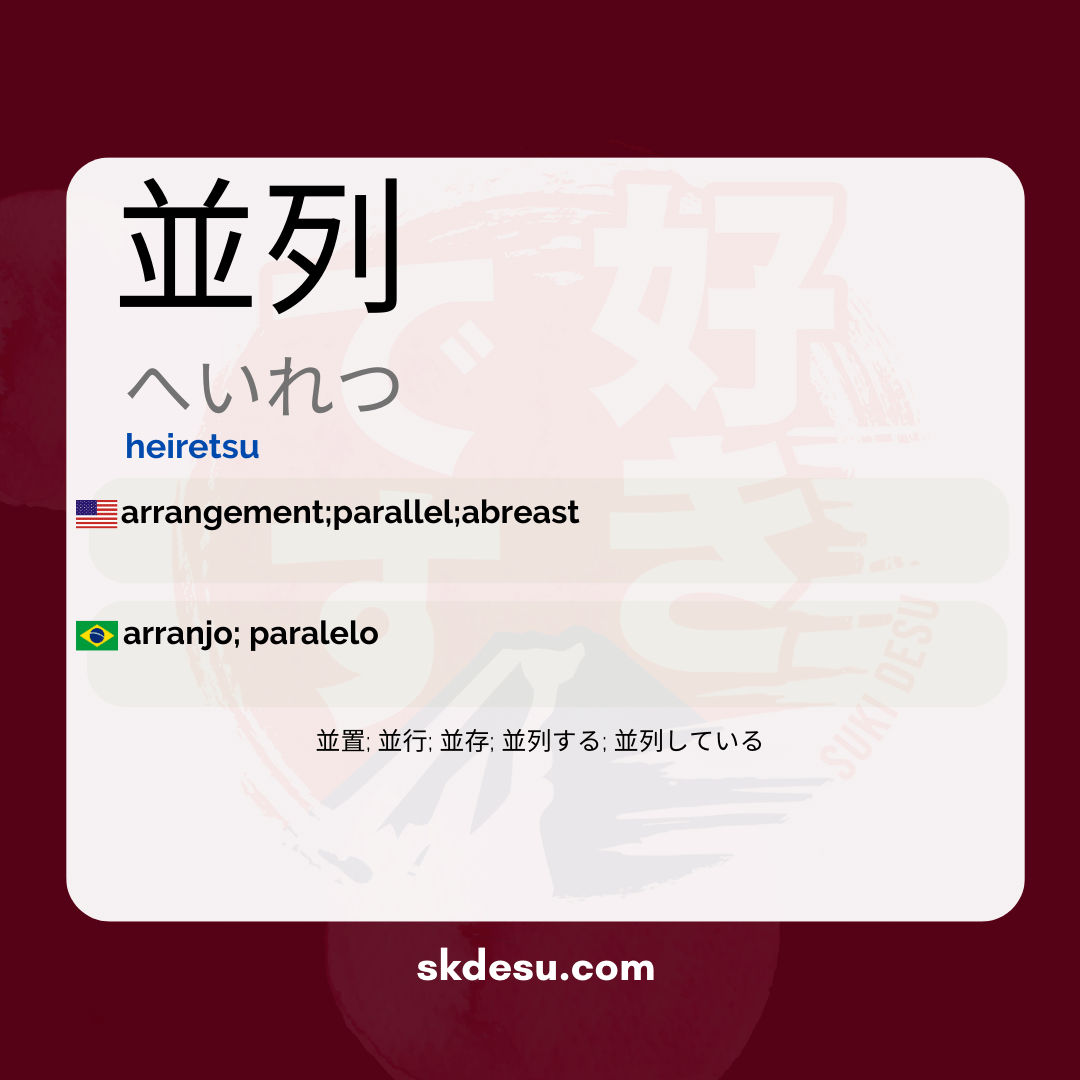Translation and Meaning of: 並列 - heiretsu
The word 「並列」(heiretsu) has an interesting meaning and is widely used in different contexts in Japan. It refers to things that are organized or arranged in a parallel or adjacent line. In everyday life, it can be used in contexts ranging from physics and design to programming and mathematics. The parallel configuration implied in the word is generally associated with the idea of symmetry and order, which reflects the etymology of the term.
Etymologically, 「並列」is composed of two kanji characters: 「並」(hei) and 「列」(retsu). The first, 「並」, means "aligned" or "in line," while the second, 「列」, translates to "row" or "line." Together, they form the idea of objects or entities that are arranged side by side in an equal, balanced, and parallel manner. In mathematics and physics, this concept is of great utility, especially in electric circuits and graph theory, where the arrangement in series or in parallel completely alters the functionality of a system.
The use of 「並列」in technological and scientific contexts is quite common. For example, in electrical circuits, the term describes the connection of electronic components arranged in such a way that the same electrical voltage is applied to each component. This arrangement is essential in many aspects of design and engineering, where redundancy and balanced load distribution are fundamental. In computing, parallel programming is another relevant application of the concept of 「並列」, involving the simultaneous execution of processes to increase efficiency and performance.
In addition to technical uses, 「並列」can also be found in more abstract or philosophical contexts. Compared to its antonym, 「直列」(chokuretsu), which refers to a series arrangement, 「並列」can symbolize harmony and cooperation, where individuals or elements operate together in an equal and synchronized manner, with none being considered more important than the other.
Vocabulary
Expand your vocabulary with related words:
Synonyms and similar words
- 並置 (へいち) - Parallel positioning; place items together.
- 並行 (へいこう) - Parallel execution; activities that occur simultaneously but independently.
- 並存 (へいぞん) - Parallel existence; coexistence of different things in the same space.
- 並列する (へいれつする) - Organize in parallel; arrange elements side by side.
- 並列している (へいれつしている) - It is in parallel; description of a situation where something is arranged side by side.
Related words
heikou
(indo) side by side; simultaneously; beside; at the same time; occur together; parallel; parallelism
heikou
(indo) side by side; simultaneously; beside; at the same time; occur together; parallel; parallelism
Romaji: heiretsu
Kana: へいれつ
Type: Noun
L: jlpt-n1
Translation / Meaning: arrangement; parallel
Meaning in English: arrangement;parallel;abreast
Definition: To have several things aligned at the same time.
Quick Access
- Vocabulary
- Writing
- Sentences
How to Write in Japanese - (並列) heiretsu
See below a step-by-step guide on how to write the word by hand in Japanese. (並列) heiretsu:
Example Sentences - (並列) heiretsu
See below some example sentences:
Nenhum resultado encontrado.
Other Words of this Type: Noun
See other words from our dictionary that are also: Noun

